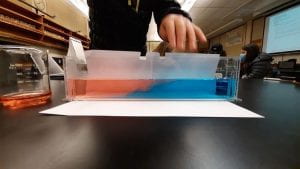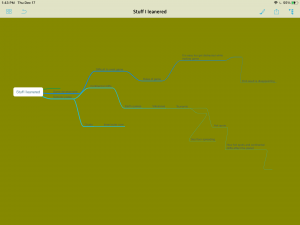Www.tectonicchances/shirt.gov
In class, we have come to an end in our project about Tectonic Plates and earthquakes. We did this projects in groups of 2, I was with Sepaus. During this project we learned about Tectonic Plates and probability and made a game about those 2 things. Before working on our game, we did some work out of a science text book, and then we went on to an experiment about hot water and cold water. The experiment we did was putting hot water (coloured red) and cold water (coloured blue) and put them in a container that had a divider in the middle, we poured the hot water into one side and the cold water on the other. Once it was filled, we removed the divider to see what would happen. Not surprisingly, the hot red water went to the top and the cold blue water went to the bottom. After the sciencey stuff, we moved onto probability. During the probability course of this project, we did some worksheets on the chances of pulling certain cards and the chances of rolling certain numbers and certain amounts of die.


Answer To Da Driving Question
Question: how does thematic and mathematics effect game design?
Answer: it effects how many game pieces and progress points we put in the game. 6 people can play and you need 12 progress points to win, multiple players can win at the same time so we put in 72 progress points
About Da Game
The game Sepaus and I created is called Monopoly Rebuild. It is named that because it is very similar to the classic board game Monopoly and you have to rebuild 6 areas of the USA, Cascadia, Florida Confederation, Yellow Stone Empire, Greater California, Texas Republic, United States Of New England. The goal is to repair your area after a Earthquake, Volcano, or Tsunami. Throughout the game you will have to pickup area, task or chance cards, a task card will have a job to do on it like fix schools and stuff like that that, you can earn progress points by buying the task, area effects people in the area the card effects, and chance cards can get or lose you progress points. Progress points are used to keep score in the game, first to get 12 progress points wins.
Curricular Competencies
EVALUATING
This project did end up being a lot harder than I expected. The hardest part of this was coming up with 10 tectonic concepts. Sepaus and I struggled with this but we did eventually figured it out. Our quality of work improved and our weather grade went up and in the end we were pleased with our final grade. Sepaus and I put in a good amount of work and our ideas turned into a decent game.
UNDERSTANDING AND SOLVING
I think what lead us to our success in the end was all of the revisions and editing we had to make. The idea of our game did change a few times over the course of this project but the final game was at the best stage. We spent some of this project learning about probability and tectonic chances which we recorded in a MindNode. One way we learned probability was calculating the odds of drawing a certain card from a deck.
QUESTIONING AND PREDICTING
“How can you relate science concepts to the game?” “How can you calculate probability in your game?” And “how are thematic and mathematical elements used in game design?” Those are the questions we had to think about during this project, and since I already answered the 3rd one, here are the other 2 questions.
We related science concepts with our chance and area cars we included in our game.
For the second one, we answered it with our learning as we calculated chances of rolling numbers on die.


